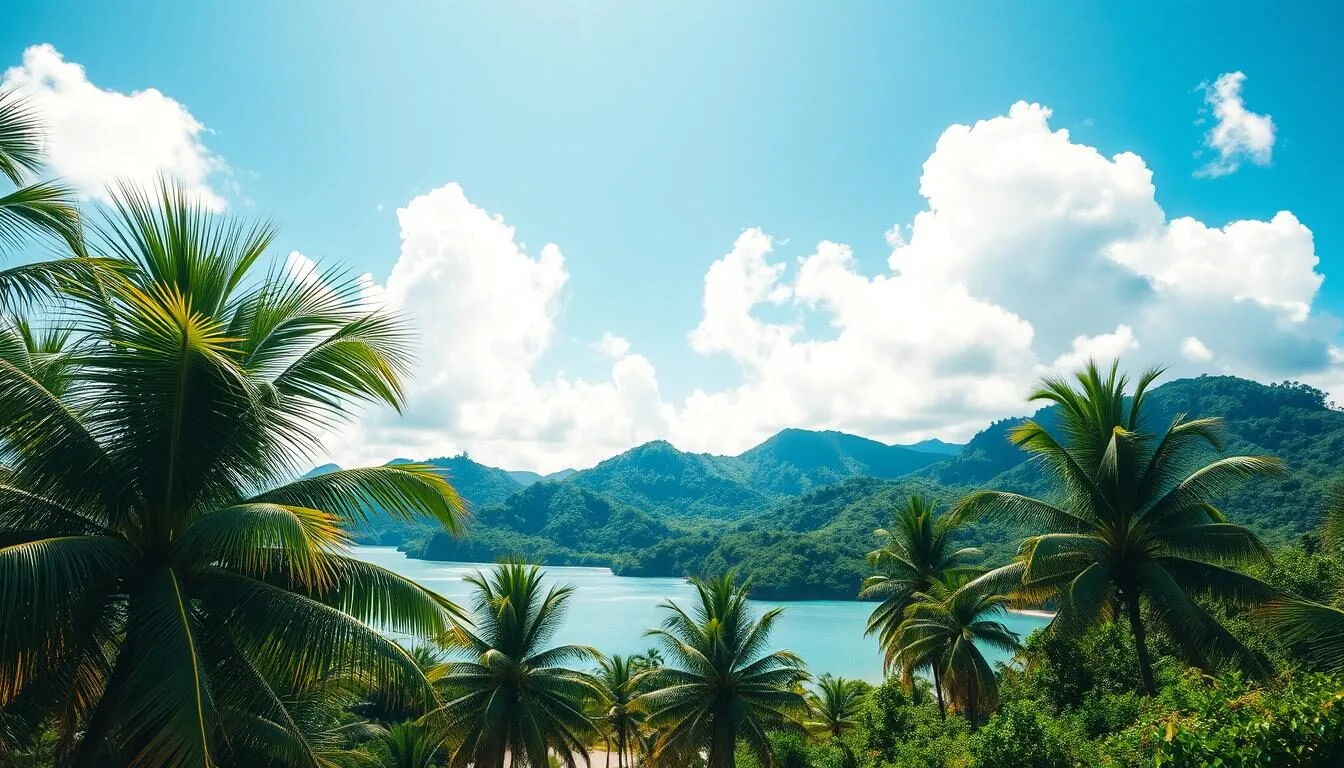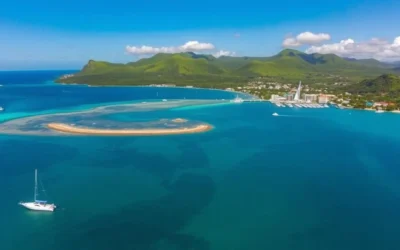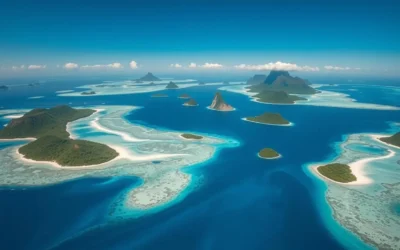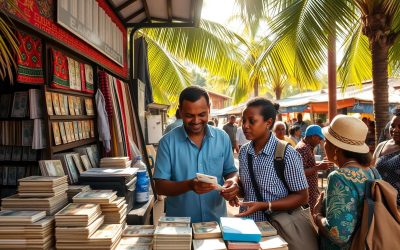✓ Accommodations✓ Flights✓ Rental Cars✓ Tours & Activities
Are you ready to explore one of the Pacific’s most pristine destinations? The Solomon Islands, with their equatorial climate, offer a tropical experience all year round. However, understanding the local weather patterns is key to making the most of your trip.
Temperatures remain relatively stable, ranging from highs of around 31°C (88°F) during the warmer months to slightly cooler temperatures during the rest of the year. The islands experience two distinct seasons, influenced by north-westerly and south-easterly winds, affecting the weather conditions.
By understanding these climate patterns, you can plan your trip to coincide with the best weather for your travel preferences. Whether you’re looking for dry and sunny days or are prepared for the occasional rain shower, this guide will help you make an informed decision.
Understanding the Solomon Islands Climate
As an island nation in Oceania, the Solomon Islands are subject to a variety of weather patterns due to their location and geography. The archipelago, consisting of six major islands and over 900 smaller islands, experiences a climate that is both diverse and complex.
Tropical Climate Year-Round
The Solomon Islands are characterized by a tropical climate year-round, with temperatures remaining relatively consistent throughout the year. The warm weather is a hallmark of this island nation, making it an attractive destination for travelers seeking sun-kissed beaches and tropical landscapes.
Impact of Geography on Weather Patterns
The geography of the Solomon Islands significantly impacts local weather patterns. The mountainous islands create their own microclimates, with more rainfall on windward slopes and drier conditions on leeward sides. The surrounding ocean moderates temperatures and contributes to the high humidity levels experienced throughout the archipelago. Island elevation also plays a role in temperature variation, with higher elevations offering slightly cooler temperatures than coastal areas.
The Two Distinct Seasons in Solomon Islands
The climate in the Solomon Islands is marked by two primary seasons that dictate the best times to visit. Understanding these seasons is key to planning a successful trip.
Dry Season: May to October
The dry season, spanning from May to October, offers the most favorable conditions for travelers. During these months, the weather is generally dry and sunny, making it ideal for outdoor activities and exploration.
Rainy Season: November to April
The rainy season in the Solomon Islands runs from November to April, characterized by higher temperatures and significant rainfall, particularly between January and March. This period coincides with the cyclone season, increasing the risk of tropical storms between December and February.
| Season | Months | Characteristics |
|---|---|---|
| Dry Season | May – October | Dry, sunny, ideal for outdoor activities |
| Rainy Season | November – April | Higher temperatures, heavy rainfall, cyclone risk |

Solomon Islands: Best Months for a Weather-Savvy Trip
For a weather-savvy trip to the Solomon Islands, understanding the best months to visit is essential. The islands offer a unique travel experience, with the dry season being particularly appealing for tourists.
June to September: The Prime Months
The period from June to September is considered the high season in the Solomon Islands. During these months, you can expect plenty of sunshine and warm temperatures, making it ideal for outdoor activities like snorkeling, diving, and hiking. This is the peak tourist season, so you can enjoy well-organized tours and activities.
May and October: Excellent Shoulder Months
May and October serve as excellent shoulder months for your Solomon Islands stay. In May, the dry season begins, offering decreasing rainfall and increasingly pleasant conditions. October marks the transition to the wet season, but still provides predominantly dry days. You’ll benefit from lower accommodation rates and less crowded attractions compared to the peak June-September period. When you visit Solomon Islands during these months, you can enjoy a more relaxed atmosphere and potentially more personalized service at resorts and tour operations.
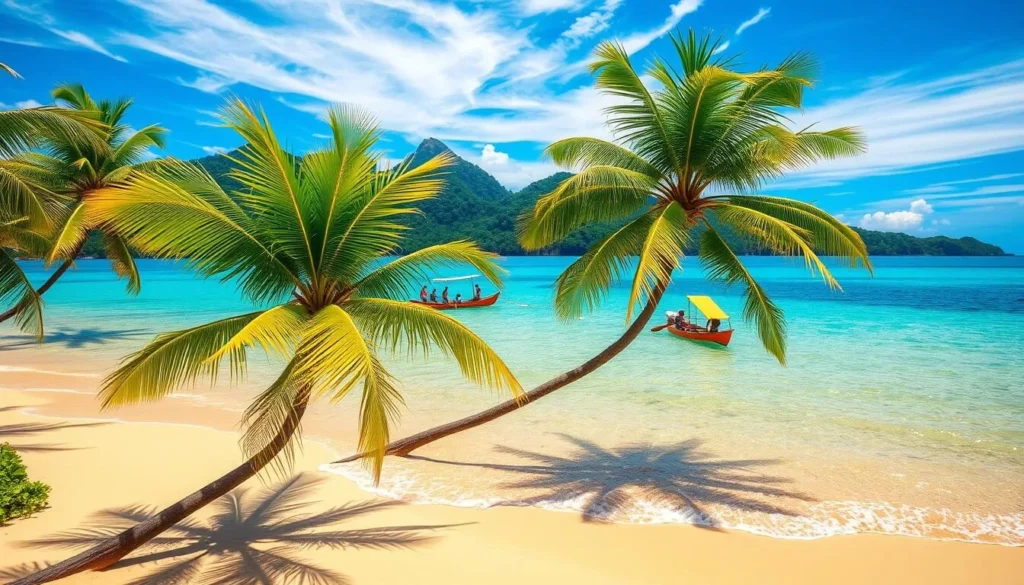
Weather Breakdown by Month
Understanding the monthly weather breakdown is crucial for planning your trip to the Solomon Islands. The island’s climate is characterized by distinct seasonal patterns that significantly impact your travel experience.
Temperature Patterns Throughout the Year
The Solomon Islands experience a relatively consistent temperature throughout the year, typical of its tropical climate. Temperatures range from 23°C to 32°C (73°F to 90°F), making it a warm destination year-round.
Rainfall and Humidity Expectations
Rainfall in the Solomon Islands follows a distinct seasonal pattern. The wettest months are from January to March, with average monthly rainfall exceeding 12mm. In contrast, the driest period is from June to September, with August being the driest month, averaging 6.04mm. Humidity remains high throughout the year, typically between 80-90%. However, it feels more comfortable during the dry season due to lower rainfall and cooling trade winds. Be aware that the wet season coincides with the cyclone season in the South Pacific, with January and February presenting the highest risk of tropical storms.
- January to March: Heaviest precipitation, frequent heavy downpours
- June to September: Driest period, with August being the driest month
- High humidity year-round, with relief during the dry season
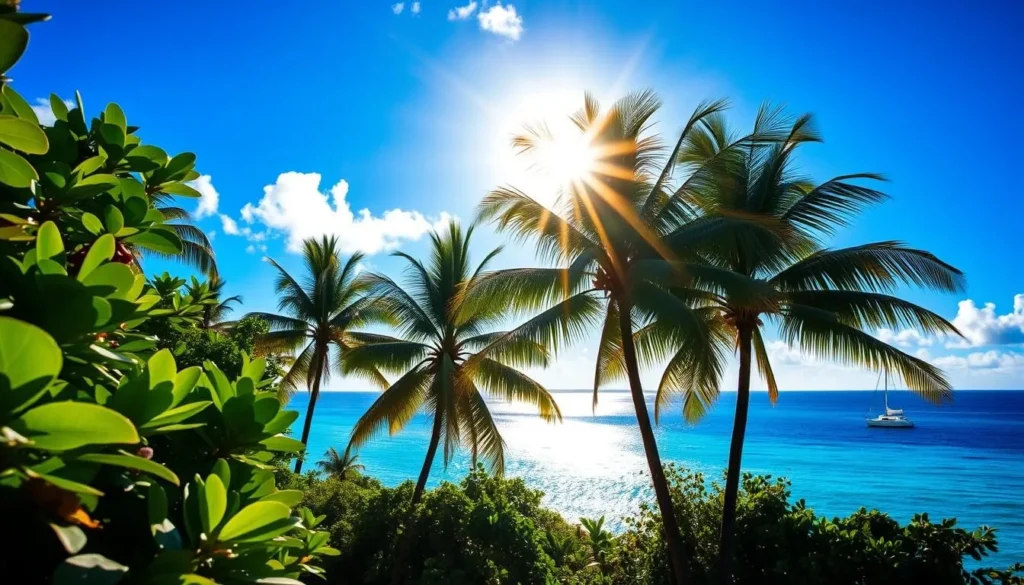
Navigating the Rainy Season: November to April
The rainy season in the Solomon Islands, which spans from November to April, brings its own unique set of challenges and opportunities for travelers. During this period, the islands experience heavy rainfall, and some facilities may be less accessible.
What to Expect During Cyclone Season
Cyclone season overlaps with the rainy season, and it’s crucial to be prepared for potential cyclones. Stay informed about weather forecasts, and consider purchasing travel insurance that covers natural disasters. While cyclones can be a concern, they are relatively rare.
Benefits of Visiting During Low Season
Visiting the Solomon Islands during the low season has its advantages. You’ll enjoy lower accommodation rates, with many resorts offering discounts of 30-50% compared to high season prices. With fewer tourists, you’ll experience more personalized service and have popular attractions virtually to yourself. Some benefits include:
- Substantially lower accommodation rates
- More personalized service due to fewer tourists
- Lush, vibrant landscapes resulting from increased rainfall
- Plenty of sunshine and outdoor activities between rain showers
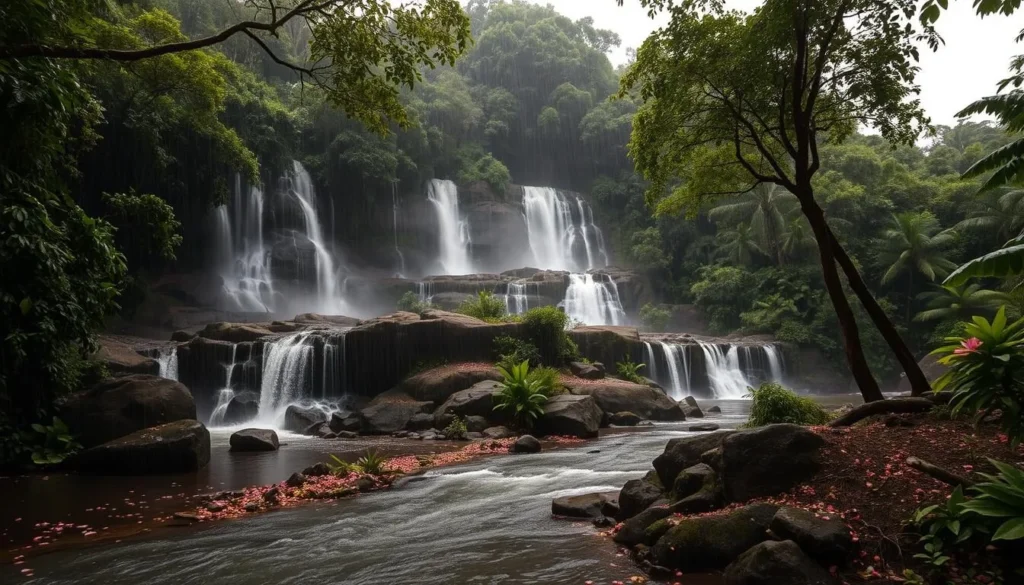
Best Activities Based on Weather Conditions
The Solomon Islands offer a diverse range of activities tailored to various weather conditions, ensuring an unforgettable experience. You can enjoy the islands’ natural beauty through various outdoor activities that are influenced by the weather.
Water Activities and Beach Time
The crystal-clear waters and pristine beaches of the Solomon Islands make them ideal for snorkeling and diving. The dry season, from May to October, is the best time for water activities due to calm seas and clear visibility.
- Explore the coral reefs teeming with marine life.
- Enjoy swimming and sunbathing on the beautiful beaches.
Hiking and Land Exploration
For those who prefer land-based activities, the dry season offers the most reliable hiking opportunities. Trails are less muddy and more accessible from May through October, making it the ideal time to explore the islands’ volcanic peaks and rainforests.
- Hike to the volcanic cone of Kolombangara.
- Explore the rainforests of Tetepare Island.
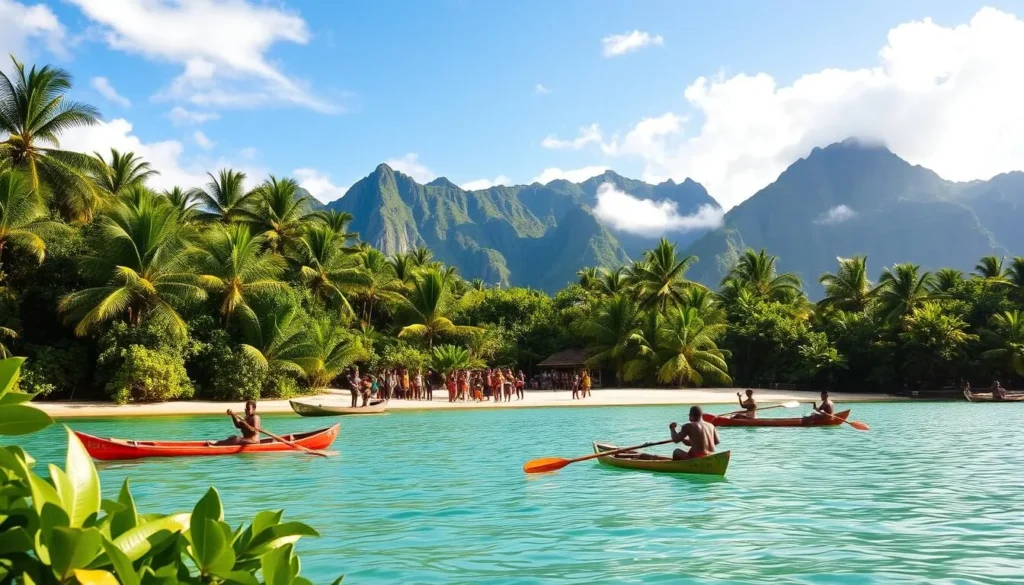
Cultural Events and Festivals Worth Planning For
The Solomon Islands are a treasure trove of cultural experiences, with numerous events and festivals that showcase the country’s rich heritage. You can immerse yourself in the local culture by attending one of the many traditional celebrations and public holidays held throughout the year.
Traditional Celebrations
Traditional celebrations in the Solomon Islands are an integral part of the country’s cultural identity. Custom Day, celebrated on July 7, is a significant event that highlights the importance of traditional customs and practices. You can experience the rich cultural heritage of the Solomon Islands by participating in these traditional celebrations.
Public Holidays and National Events
The Solomon Islands observe several public holidays and national events that provide unique cultural insights for visitors. Some of the notable events include:
- Independence Day on August 7, which features parades, speeches, sporting events, and cultural performances throughout the country.
- Easter celebrations, which are widely observed in the predominantly Christian nation, with church services and family gatherings.
- Queen’s Birthday in June, which is celebrated with various community events and activities.
- Christmas and New Year celebrations, which blend traditional Christian observances with unique Solomon Islands customs.
| Event | Date | Description |
|---|---|---|
| New Year’s Day | January 1 | Celebrations marking the beginning of the new year. |
| Good Friday and Easter Monday | Variable dates | Christian observances with church services and family gatherings. |
| Custom Day | July 7 | Celebration of traditional customs and practices. |
| Independence Day | August 7 | Commemoration of the country’s independence with parades and cultural events. |
| Christmas | December 25 | Traditional Christian observance with unique Solomon Islands customs. |
| Boxing Day | December 26 | Celebrations continuing from Christmas Day. |

Practical Travel Considerations
As you plan your trip to the Solomon Islands, it’s essential to consider the practical aspects of traveling to this beautiful destination. Understanding the requirements and options available will help ensure a smooth and enjoyable journey.
Visa Requirements and Entry Regulations
Before traveling to the Solomon Islands, you need to understand the visa requirements. Check if you need a visa to enter the country and what the entry regulations are. This information is crucial for a hassle-free trip.
Transportation Between Islands
Traveling between the islands requires careful planning. You can use domestic flights operated by Solomon Airlines for a faster but more expensive option. Alternatively, ferry services provide a more economical choice, though schedules can be unreliable. Organized tours that include transportation are also a convenient option, especially for remote islands.
| Transportation Mode | Cost | Reliability |
|---|---|---|
| Domestic Flights | High | High |
| Ferry Services | Low | Variable |
| Organized Tours | Variable | High |
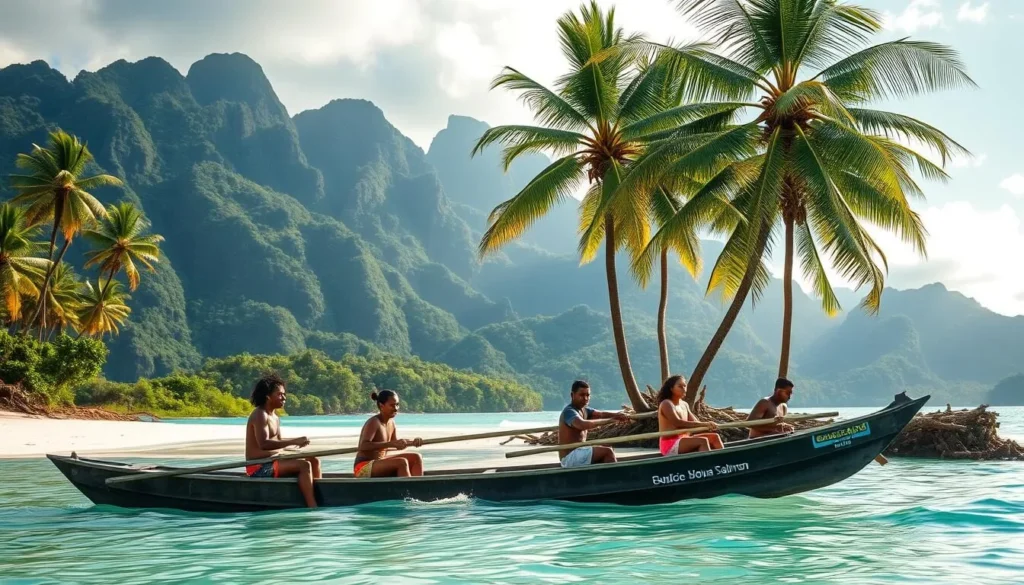
Health and Safety Tips for Different Seasons
As you plan your trip to the Solomon Islands, being aware of the seasonal health and safety tips can make a big difference. The islands present unique challenges that vary with the seasons, and being informed is key to a safe and enjoyable journey.
Health Precautions for Travelers
When traveling to the Solomon Islands, it’s essential to take certain health precautions. Ensure you are up-to-date with all recommended vaccinations and take measures to prevent malaria, such as using insect repellents and wearing protective clothing. Additionally, be mindful of your food and water intake to avoid waterborne illnesses.
Safety Considerations Based on Weather
The weather in the Solomon Islands significantly impacts safety considerations. Here are some key points to keep in mind:
- During the wet season (November-April), monitor weather forecasts closely as tropical storms and cyclones can develop with limited warning.
- Marine activities require extra caution during the wet season when sudden squalls can create dangerous conditions for small boats and swimmers.
- The dry season (May-October) presents fewer weather-related risks, though sun protection is essential as UV exposure is intense year-round.
- Regardless of the season, remote beaches may have strong currents and undertows, so swimming only at recommended locations and never alone is advised for your safety.
Conclusion: Planning Your Perfect Solomon Islands Trip
Planning your Solomon Islands trip starts with choosing the right season. For optimal weather, target June to September. Consider focusing on a specific region, like the Western Province for diving or Guadalcanal for history. The Solomon Islands offer an unforgettable experience.
The above is subject to change.
Check back often to TRAVEL.COM for the latest travel tips and deals.
